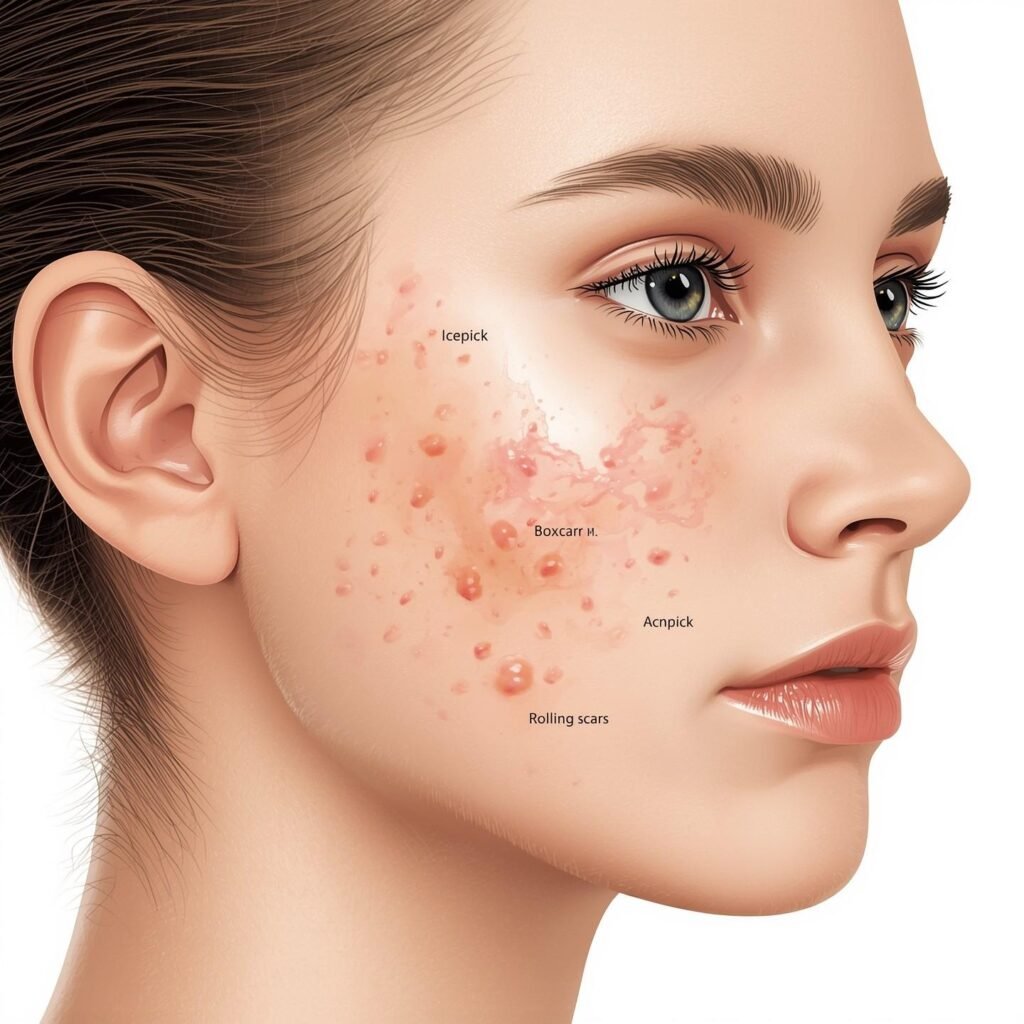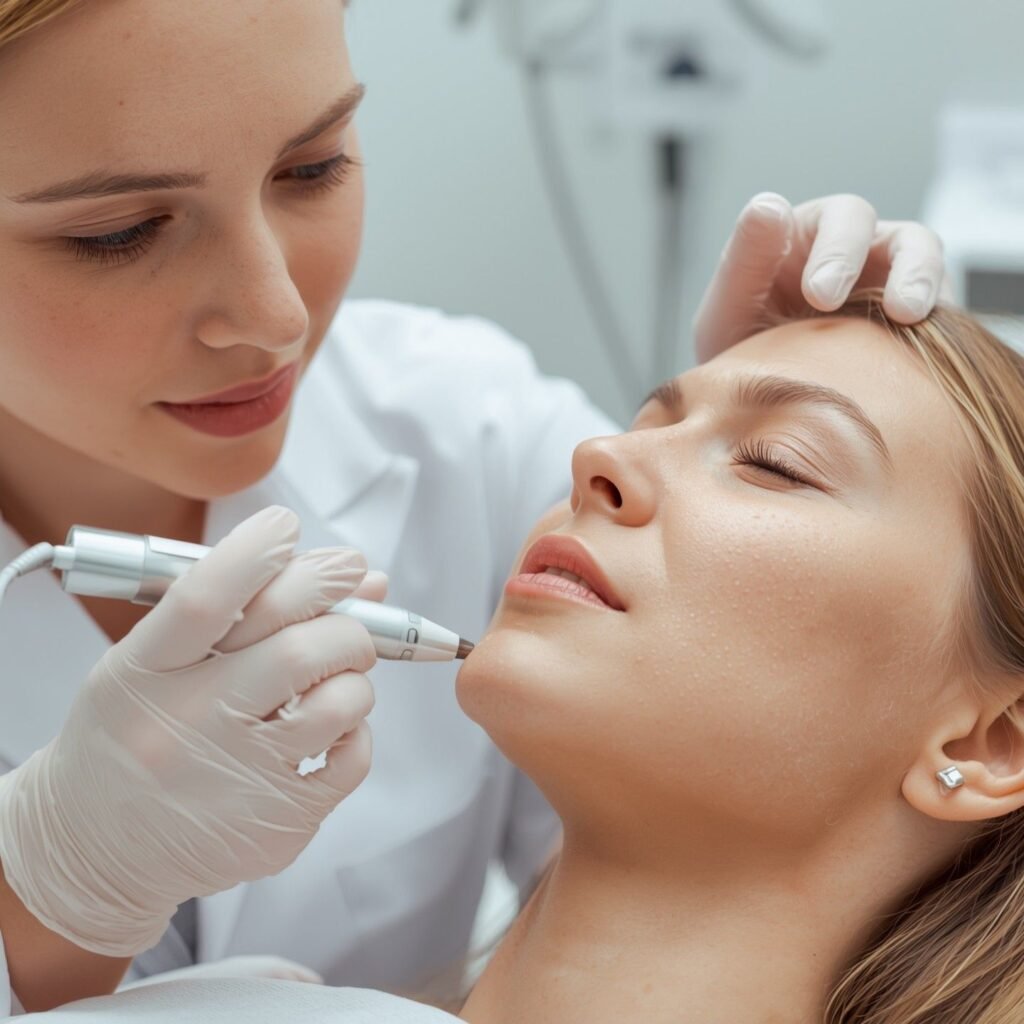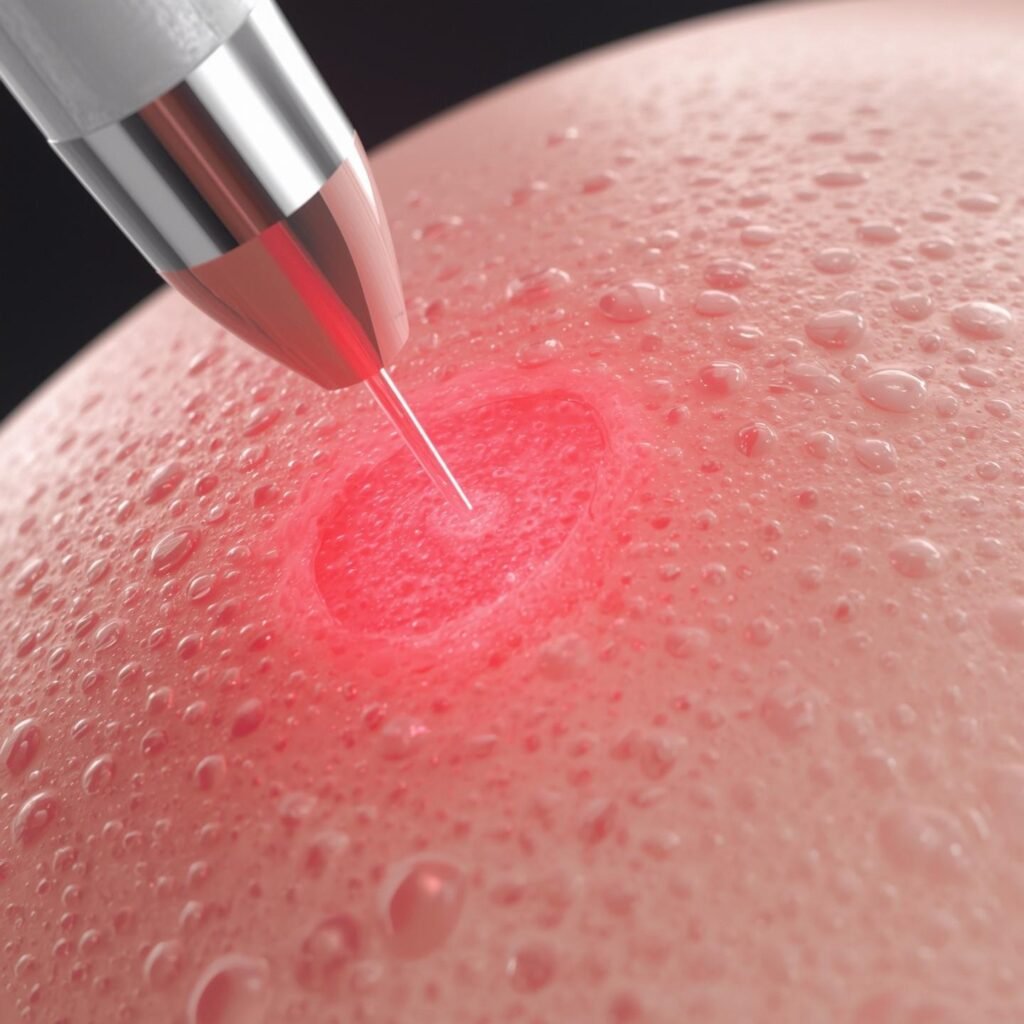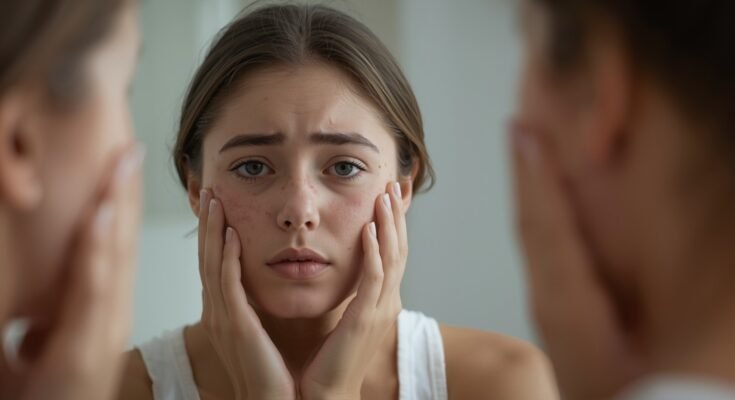Introduction
Living with acne and the scars it leaves behind can be a painful reminder of a stubborn condition. I remember how the irritation and soreness often made me look for quick remedies that promised to clear the appearance of marks. Many people prefer so-called natural methods, but the science behind these is often unclear, and sometimes they can cause more problems than they solve. Skincare scientists have long advised using caution, as some options may not be proven or approved. What worked for me was understanding that not every popular option is better, and noticing when symptoms like extra inflammation showed up during a treatment.
Over time, I explored over-the-counter products, prescribed medications, and even procedures like microdermabrasion with a dermatologist. Each step had its challenges—breakouts could still appear, which was extremely frustrating, but with patience, the scars can be treated and their visibility reduced. From my experience, the effectiveness of any treatment depends on starting at the right time and sticking with it. Whether it’s trying new options or choosing a typical routine, the key is to help your skin heal properly and stay consistent once you decide to start the journey to finally get rid of scars.

How are Acne Scars Formed?
Acne scars develop when deep pimples or cysts damage the skin, leading to permanent marks. During the healing formation, the body produces irregular tissues that can leave dark spots, small indentations, or even elevations. These scars may appear not just on the face, but also on the chest, back, and neck. In some cases, lingering bacterial infections can worsen the damage, making the scars more noticeable and harder to fade.
Atrophic or depressed acne scars
From my own journey with acne, I learned that atrophic and depressed scars are quite common, especially on the face, where the skin is more delicate. A single scar may look small, but the way it affects confidence can feel much bigger. These marks usually form when the wound from a breakout doesn’t make enough collagen during healing, leaving behind shallow areas that don’t blend smoothly with the surrounding skin.
When I first noticed these scars, I was surprised by how slow the healing process felt. Over time, though, I realized that understanding why the skin reacts this way made me more patient. The lack of collagen in the wound plays the main role in creating atrophic scars, and while treatments can help, it’s also important to care for the surrounding areas of the face so the overall appearance improves. Having dealt with this myself, I know how discouraging these depressed scars can be, but I’ve also seen how targeted care can help the skin gradually recover.
1-Boxcar
Among the different types of acne scars, boxcar scars stand out because they are wide and often U-shaped with sharp edges. On my own skin, I’ve noticed how some can look shallow while others seem much more deep, which changes how they respond to treatments. For example, gentle peels or microdermabrasion can sometimes soften the look of shallow marks, but deeper ones often need stronger resurfacing options.
In my experience, laser therapy can be effective but must be used cautiously, especially on darker tones, since there’s a risk of extra scarring or pigmentary issues like post-inflammatory pigmentation. A dermatologist once suggested I pretreat with hydroquinone for several weeks before starting laser sessions to help reduce these risks. These steps reminded me that healing isn’t one-size-fits-all: each scar requires the right balance of care, resurfacing, and sometimes patience with how long the results take to appear.
2-Ice pick
When I first learned about ice pick scars, I understood why they can be so challenging. These marks are narrow and V-shaped, often looking like small, round or oval holes in the skin, almost similar to old chickenpox marks. Their depth makes them especially difficult to treat, because they can extend far below the surface, unlike other shallow scars.
From my experience, improving these scars often requires targeted professional care rather than simple home remedies. Treatments may focus on resurfacing the skin or stimulating new tissue to fill in the deep holes, but results take time. What I’ve noticed is that patience and the right approach matter most, since ice pick scars often respond slowly, yet with persistence, the skin can still show progress.
3-Rolling
Some scars take on a rolling look, forming soft depressions across the skin with a rounded and slightly irregular appearance. I noticed that these scars often appear wide, making them easier to see in certain light. While they can be frustrating, knowing the type helps in choosing the right treatment, whether resurfacing or collagen-stimulating methods.
4-Hypertrophic or raised acne scars
Unlike rolling scars, hypertrophic or raised acne scars usually appear on the chest and back, sitting above the surface of the surrounding skin. They happen when too much collagen builds up during healing, leaving thick marks. These can sometimes look purple, red, or brown, but often fade after a few months with proper treatment. I once consulted a dermatologist and a healthcare professional who explained the best method to reduce their appearance, depending on the condition of my skin.
How to Get Rid of Acne Scars?
Various treatments can help improve acne scars and support skin renewal. Options like laser therapy, chemical peels, and dermabrasion are proven techniques to resurface the skin. Alongside medical methods, adopting a balanced lifestyle with a proper diet and regular exercise plays a role in long-term healing and helps prevent new breakouts that could worsen scarring.
How is Acne Scar Treatment Performed?

Every treatment for acne scars depends on their type and size. To repair skin damage, doctors may renew the cells by removing the upper layer through a peel, laser therapy, chemical peels, or dermabrasion. In severe cases, surgery might be recommended to achieve a smoother complexion and restore the natural look of the skin.
1-Alpha hydroxy acids
Using alpha hydroxy acids or AHAs can help treat acne scars by targeting dead skin and clogged pores. I’ve seen how these products gently exfoliate the outer layer, making discoloration less noticeable. While some scars may still look rough, AHAs are considered mild and among the best types of treatments for certain scars.
2-Lactic acid
From my own trial, lactic acid peels done every few weeks for a few months noticeably improved the texture, appearance, and pigmentation of my scars. Some dermatologists suggest pairing serums, ointments, or even apple cider vinegar as a toner or spot treatment, but I’ve found these can be at-home methods that sometimes irritate sensitive skin. I always test small areas first, since the risk of inflammation, irritation, or even post-inflammatory hyperpigmentation is real. Still, when used carefully, it remains one of the best types of scar care.
3-Retinoids
Topical retinoids became part of my treatment routine because of their scar-smoothing benefits. By supporting cell regeneration and enhancing texture, they can make scars and discoloration less noticeable. But they also left my skin very sensitive to the sun, so daily sunscreen was essential. I tried both over-the-counter creams and serums, while stronger concentrations required prescriptions. I always checked products for retinol in the ingredients, and they worked especially well for atrophic and depressed scars.
4-Salicylic acid
I’ve relied on salicylic acid in pads, spot treatments, lotions, and face cleansers. It not only clears pores but also reduces swelling and redness, while it exfoliates the skin gently. I learned to make it part of my daily routine, and sometimes it’s included in chemical peels too. The only challenge I faced was dryness and irritation, especially on sensitive skin, but it’s still one of the best ways to manage scars.
5-Sunscreen
Daily sunscreen became non-negotiable for me. Without it, scars darkened under the sun. Limiting exposure kept them less noticeable, and my treatments worked more effectively. My specialist and healthcare professional always reminded me that this was the best habit for preventing scars from worsening.
6-Dermabrasion
Dermabrasion was one of the most effective treatments I tried for facial scars. Unlike microdermabrasion, it goes deeper, as professionals use special tools to exfoliate the top layer of the skin. For shallow scars like boxcar or rolling, it made a clear difference, while deeper ones were only partly less noticeable.
7-Chemical peels
A strong chemical peel acid can remove the top layer of skin and reduce deeper scars. I’ve used mild versions at home, but for more dramatic results, I turned to a healthcare professional. There are different types, and finding the best solution depends on scar severity, but it certainly improved the face more than simple masks ever could.
8-Laser resurfacing
Laser resurfacing felt similar to a chemical peel or dermabrasion, designed to remove the top layer of skin. The treatment had a quicker healing period but required keeping a bandage on the area. It worked well for lighter scars, though I was warned it’s less effective on darker tones. Still, it’s one of the best options for lighter skin dealing with stubborn scars, especially if breakouts are under control.
9-Fillers
From my own skincare journey, I’ve seen how fillers can make a real difference for people struggling with acne marks. When handled by trained healthcare professionals, a filler is carefully injected under the surface of the skin. This process adds collagen or even fat, giving the area a more plump and smooth look. It’s especially helpful for depressed scars that don’t heal well on their own, like boxcar and rolling scars.
Most of these treatments aren’t permanent; the results often last for several months before needing a touch-up. Still, many people—including myself—find that commercial options available today are safe and effective when done by experts. The boost in confidence you get from seeing scars fade, even temporarily, can be life-changing.
10-Micro-needling
When I first tried micro-needling, I was nervous about the idea of a handheld device with a needle roller or pen creating tiny puncture marks in my skin. But with my face properly numbed, the treatment felt surprisingly comfortable. Over time, as the skin naturally heals, new collagen forms, which can reduce the depth of depressed scars and improve uneven tones.
There’s growing evidence from the Academy of Dermatology showing it’s one of the best methods to safely improve stubborn acne marks. Many people, myself included, notice that this procedure helps make old scars look less visible while being generally considered safe when performed by a trained professional.
11-Injections
In my own experience, injections have been an effective option when dealing with stubborn acne scars. Dermatologists or plastic surgeons often use special medications like corticosteroids to soften and flatten raised scars. For tougher cases, drugs such as chemotherapy agents, fluorouracil (5-FU), or even interferons may be used. These are usually done in a series over several weeks, and the results can be quite noticeable. Some doctors also combine this procedure with subcision, where tight fibers under the surface are released to lift depressed scars.
12-The Bottom Line
Dealing with acne scars can feel frustrating, but the right treatments make a big difference. While no single option gives instant or fully permanent results, working with a healthcare professional ensures the treatment you choose will safely reduce the appearance of scars and even help prevent new ones. Simple steps like avoiding picking, popping, or squeezing every breakout protect your skin from further irritating or damaging healthy tissue—something I had to learn the hard way before finally seeing lasting improvements.
Consult a Dermatologist About Your Case of Acne Scarring
If you have stubborn or severe scarring, consulting a dermatologist is the best step. They can suggest medical treatments or remedies that balance results with minimal side effects, helping you achieve healthier, acne-free skin over time.

FAQ
What Cream is Used for Acne Scars?
A cream prescribed under a doctor’s guidance can help treat acne scars and even prevent their formation in the first place. These creams often work best when combined with professional care and a tailored skincare routine.
Laser Treatment for Acne Scars: What Is It?
Laser treatment for acne scars works by targeting damaged skin and boosting collagen production. As the new collagen forms, it helps to repair the texture of the skin and diminish the appearance of scars. This treatment is often chosen for its precision and effectiveness, especially for people with long-lasting marks.
How Long Does It Take for Acne Scars to Fade?
The duration depends on the type, depth, and size of the scars as well as individual skin characteristics. Mild and superficial scars may fade with natural renewal over months, while deep or large ones can feel almost permanent without professional care.
Is Natural Acne Scar Removal Possible?
Some treatment options are natural and may help scars fade, especially if the scarring is superficial or minor. However, for deep lesions, natural remedies often cannot reverse the damage, though they may not cause harm if used correctly.
What Are the Types of Acne Scars?
There are several types of acne scars. Hypertrophic scars form when excess collagen builds up after wounds, creating raised tissue that may feel itchy or tender. Atrophic scars include indentations due to loss of tissue, such as icepick marks that look like tiny pinpricks, boxcar scars with sharp edges, and rolling scars that leave a wavy, uneven texture. Keloid scars are thick, may darken to red or brown, extend into the surrounding skin, and can be painful.
Are There Any Natural Acne Scar Removal Remedies to Try at Home?
Some home remedies may support scarring improvement. Apple cider vinegar in a diluted solution can act like mild exfoliating acids, though overuse may cause burns. Turmeric powder has anti-inflammatory and antibacterial properties, while coconut oil (best if cold-pressed) helps moisturise even oily skin. Tea tree oil offers antimicrobial action for small bumps, and lemon juice with citric acids and vitamin sugars may encourage renewal, though it can irritate sensitive skin. Manuka honey is known for its antibacterial effects and can be applied with cotton to soothe pigmented scars. Some people even try acupuncture to boost circulation, reduce inflammation, and stimulate collagen regeneration. Still, a dermatologist or healthcare expert should guide safe use.
What Is the Best Natural Acne Scar Treatment from Dermatologists?
Natural treatments recommended by professional dermatologists are tailored to your skin care needs. They focus on safe, non-aggravating options proven to be effective for most people, rather than relying only on home remedies.




